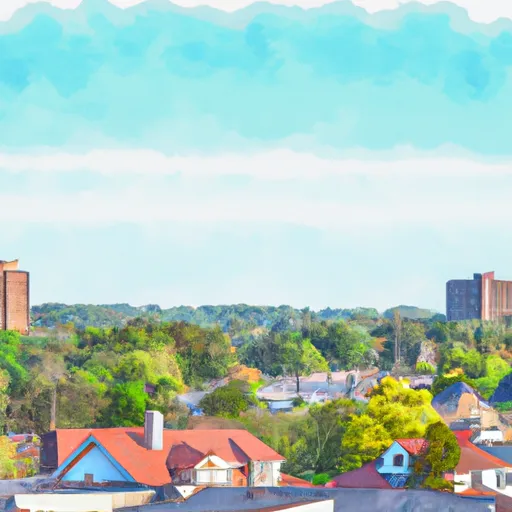-
 Snoflo Premium
Snoflo Premium
Get unlimited access to all our content
With no Ad interruptions! - Start Your Free Trial Login with existing account
Hockessin
Eden Index
Climate
9.6
•
Recreation
4.2
•
Community
5.8
•
Safeguard
6.7/10

Hockessin, Delaware is a charming community located in New Castle County. The climate in Hockessin is generally moderate, with warm summers and cool winters. Summers are typically humid, with temperatures averaging in the high 70s to low 80s Fahrenheit. Winters can be cold, with temperatures often dropping below freezing, and an average snowfall of around 20 inches per year.
Hockessin is blessed with numerous natural water features, such as creeks, streams, and ponds. These hydrology constituents add to the beauty of the area and provide opportunities for outdoor activities. The White Clay Creek State Park, situated nearby, offers a variety of recreational opportunities, including fishing, hiking, biking, and picnicking. Visitors can explore miles of scenic trails, enjoy birdwatching, or try their hand at catching trout in the pristine waters of the creek.
Additionally, the Ashland Nature Center, located in Hockessin, is a popular destination for nature enthusiasts. It features diverse habitats, a variety of wildlife, and informative educational programs for all ages. Overall, Hockessin offers a fantastic blend of natural beauty and outdoor recreation opportunities for residents and visitors alike.
What is the Eden Index?
The Snoflo Eden Index serves as a comprehensive rating system for regions, evaluating their desirability through a holistic assessment of climate health, outdoor recreation opportunities, and natural disaster risk, acknowledging the profound impact of these factors on livability and well-being.
Climate Health Indicator (CHI): 9.6
Hockessin receives approximately
1212mm of rain per year,
with humidity levels near 78%
and air temperatures averaging around
12°C.
Hockessin has a plant hardyness factor of
7, meaning
plants and agriculture in this region tend to thrive during the non-winter months.
By considering the ideal temperature range, reliable water supplies, clean air, and stable seasonal rain or snowpacks, the Climate Health Indicator (CHI) underscores the significance of a healthy climate as the foundation for quality living.
A healthy climate is paramount for ensuring a high quality of life and livability in a region, fostering both physical well-being and environmental harmony. This can be characterized by ideal temperatures, reliable access to water supplies, clean air, and consistent seasonal rain or snowpacks.
Weather Forecast
Streamflow Conditions
Lower Delaware
Area Rivers
Lower Delaware
Snowpack Depths
Lower Delaware
Reservoir Storage Capacity
Lower Delaware
Groundwater Levels
Recreational Opportunity Index (ROI): 4.2
The Recreational Opportunity Index (ROI) recognizes the value of outdoor recreational options, such as parks, hiking trails, camping sites, and fishing spots, while acknowledging that climate plays a pivotal role in ensuring the comfort and consistency of these experiences.
Access to outdoor recreational opportunities, encompassing activities such as parks, hiking, camping, and fishing, is crucial for overall well-being, and the climate plays a pivotal role in enabling and enhancing these experiences, ensuring that individuals can engage in nature-based activities comfortably and consistently.
Nearby Ski Areas
Catastrophe Safeguard Index (CSI):
The Catastrophe Safeguard Index (CSI) recognizes that natural disaster risk, encompassing floods, fires, hurricanes, and tornadoes, can drastically affect safety and the overall appeal of an area.
The level of natural disaster risk in a region significantly affects safety and the overall livability, with climate change amplifying these risks by potentially increasing the frequency and intensity of events like floods, fires, hurricanes, and tornadoes, thereby posing substantial challenges to community resilience and well-being.
Community Resilience Indicator (CRI): 5.8
The Community Resilience Indicator (CRI) recognizes that education, healthcare, and socioeconomics are crucial to the well-being of a region. The CRI acknowledges the profound impact of these elements on residents' overall quality of life. By evaluating educational resources, healthcare accessibility, and economic inclusivity, the index captures the essential aspects that contribute to a thriving community, fostering resident satisfaction, equity, and social cohesion.

